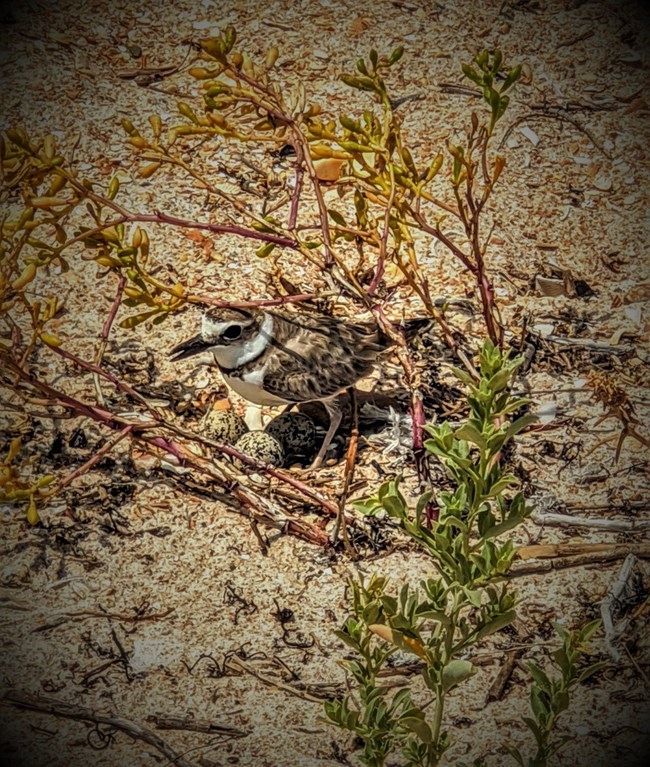
NPS Charadrius wilsonia The Wilson’s plover is a staple shorebird at Fort Matanzas National Monument, as well as many other places along Florida's coast. These quiet and calm birds scurry around the shelly beach on the hunt for their favorite food, fiddler crabs and other invertebrates. They have a heavy bill that can catch fiddler crabs, allowing them to shake the crabs so vigorously their legs fall off, which makes for easier swallowing. Plovers hunt both day and night and scurry more than fly across the beach. Breading plovers have different feathers than non-breeding individuals. Males possess a dark black ring around their neck, while females have a ring of dark brown. They nest in little scrapes in the shell-dominated sand that typically makes up the south end of the beach. They take shelter in the dune landscape, which has plenty of plant life in which to hide. These birds get along fine with the encompassing least tern colony that coincides with the plover’s April-July breeding season. They benefit from the aggressive protection the terns provide over their nesting area. Least terns do not seem to mind sharing the beach with plovers, which they do not view as a threat. Wilson’s plovers nest in isolated pairs. As part of the courtship ritual, the male will scrape a nest in the sand, usually near a conspicuous object like a plant, driftwood, or rock. They droop their wings, lower their tail, and patter with their feet to attract a potential mate. The males make a few different nests, allowing the female to pick the perfect one. After settling in the female tends to lay between two to three speckled eggs. Plovers nest and raise their chicks together, taking turns incubating the eggs, and then feeding and watching the young once they’ve hatched. In the event of a threat, one parent will peep or chirp to draw attention and run the opposite direction of the other parent and chicks. They may also attempt a broken wing display, in which they pretend to have an injured wing to attract predators away from their nest or young. Plover chicks take only 21 days to mature. This fast maturing allows for their flight feathers to grow and make them safer from predators sooner. The greatest threat to Wilson’s plovers is climate change and human interference. As water levels rise along the coast, breeding grounds are washed over and eroded away. Coastal development is also covering nesting sites with homes, businesses, and parking lots. Human and pet presence (especially off-leash dogs) causes great distress to the nesting birds if it’s too close to nesting sites. Disturbed birds fly off, and untended eggs overheat if they are left unshaded for an extended period of time. These sweet natured birds need our help to thrive in an ever changing and more crowded world. By not littering, recycling, and leashing our pets when they’re out of the water, we can make the beach a safer place for plovers and all other animals in the park. |
Last updated: July 8, 2020
